Aurner is the twelfth addition to Aesop’s illustrious lineup of eau de parfum. Perfumer Céline Barel, creator of the brand’s second perfume Tacit, returns to create a magnolia-centric fragrance drawing from literature and the idea that everything beautiful must also be a little bit strange. Zaneta Cheng reports
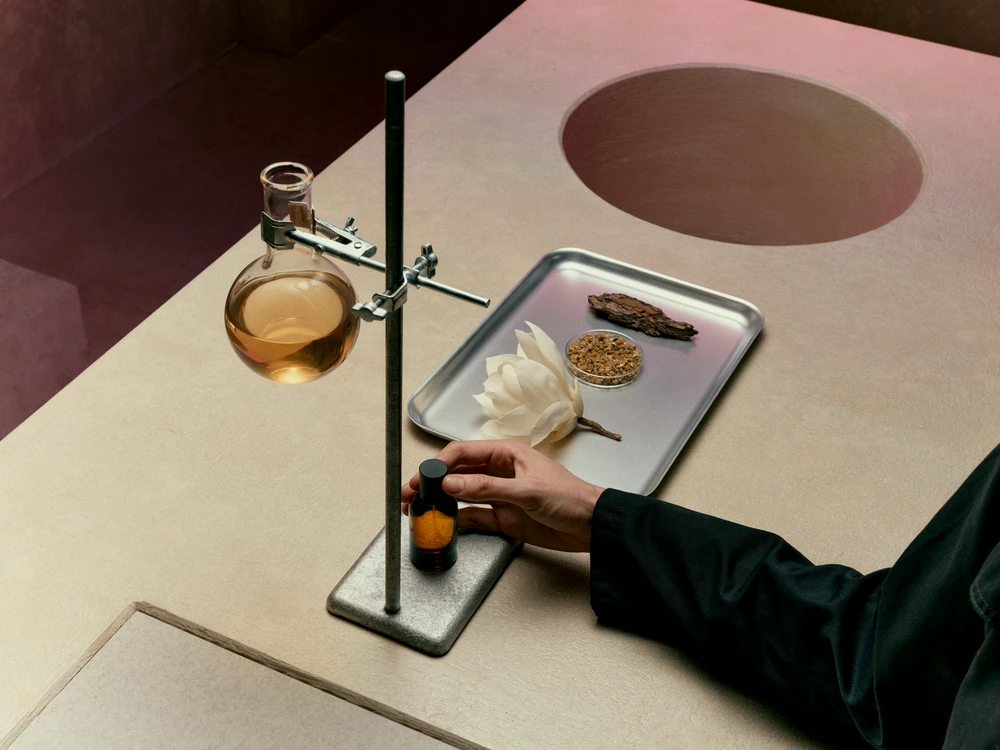
Aurner, an old Norse word meaning “to be adorned or embellished with flower” was the natural choice for the name of Céline Barel’s second fragrance for Aesop. A forgotten word, off-piste and oblique, it encapsulates both Aesop’s own identity and Barel’s approach to the juice which does adorn its wearer with flower – in this case, the magnolia flower. It’s also somewhat enigmatic, not unlike the way Barel chooses to use the magnolia’s leaf rather than the flower.
Guided by the concept of “a defiant bloom” – a notion Barel landed on following a briefing process by Aesop that featured a multisensory collage scrapbook comprising the works of Chinese poet Li Qingzhao, a palette of greens from Werner’s Nomenclature of Colours, the song “Lilac Wine” by Nina Simone, dried herbs and other references she refers to as amounting to a cabinet of curiosities – the nose behind the brand’s crisp and invigorating Tacit eau de parfum wanted to create “a nonconformist floral fragrance”.
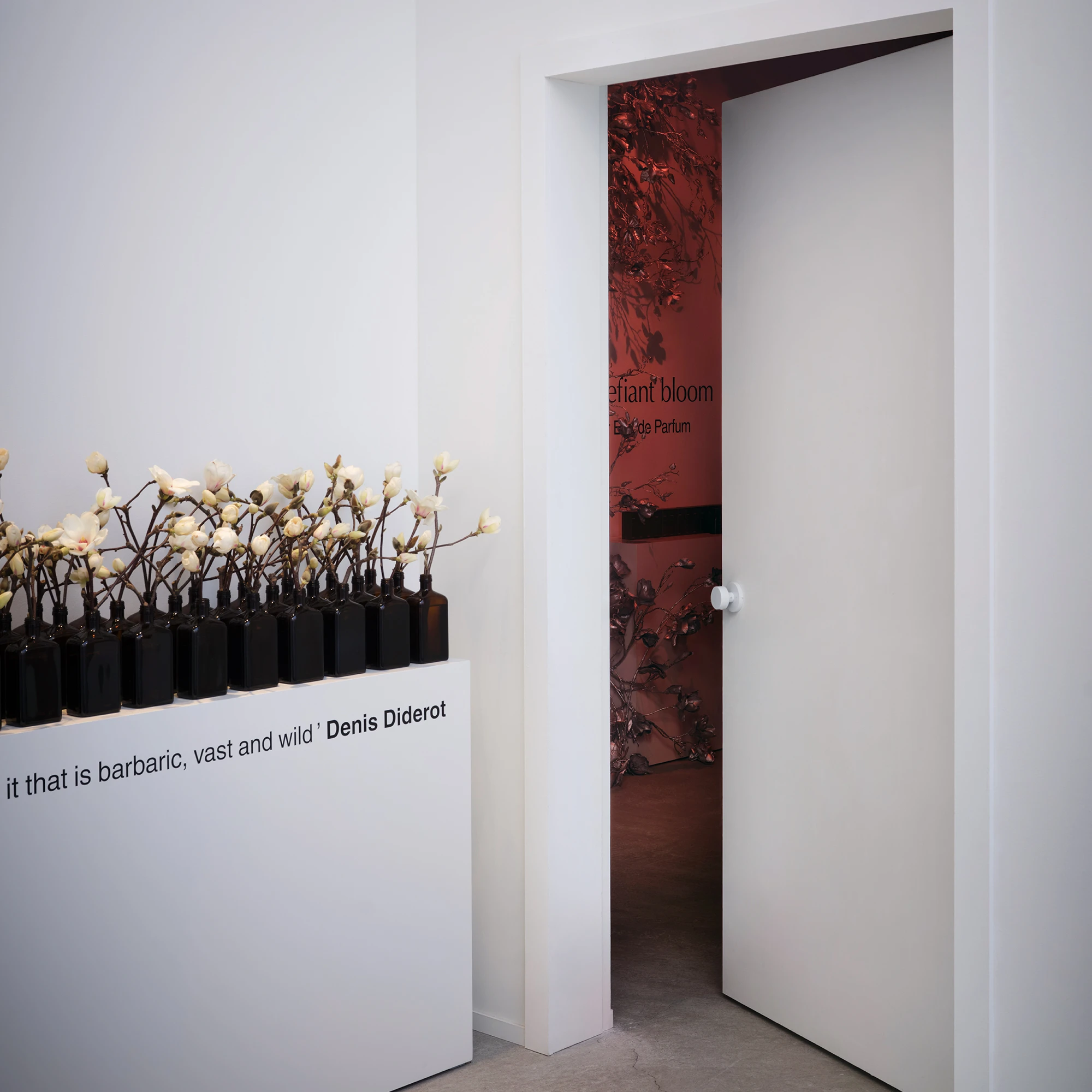
What exactly constitutes a nonconformist fragrance? As an introduction to audiences and customers, the nondescript Aurner pop-up in Seoul, hidden behind shopfronts in the fashionable Seongsu district, is marked only by a statue of a nose perched on a plinth. The doors open into a room with fresh magnolias in medicine bottles laid out in three rows against the wall. A quote by philosopher Denis Diderot (of the French Enlightenment period) is emblazoned underneath – “Poetry must have something in it that is barbaric, vast and wild.”
It’s an unorthodox approach, linking scent with literature and music. But Barel seizes on the idea of the unexpected. “I’ve always liked working with tensions, which is embodied in this floral expression of ‘a defiant bloom’ because it defies genders, like all Aesop fragrances, yet at the same time portrays tensions between strength and softness,” she says. “The magnolia leaf is the main floral ingredient, but I think it’s really the combination of the magnolia leaf and the Roman chamomile that makes Aurner interesting. The Roman chamomile gives more body and volume to the floral, while the magnolia leaf is a bit thin; it’s fresh but alone it can lack body.”
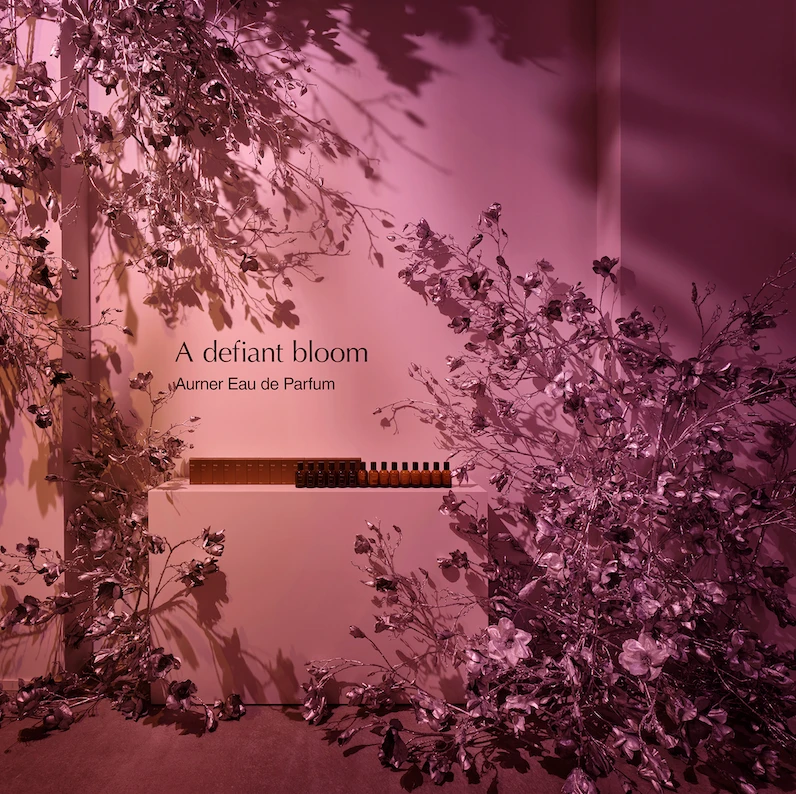
The decision to use magnolia leaf rather than the flower is unexpected. A look at the ingredients table at the Aurner pop-up shows baskets of herbs. Vetiver heart, cedar chips, chamomile flowers, magnolia leaf – none are those that one might immediately conjure should they be asked to think of what goes into a floral fragrance. Barel attributes the unique combination to the briefing book that the team gave her at the beginning of the ideation process, which inspired her “to create a floral fragrance that is very pure, soothing and calming, but also bold and powerful.
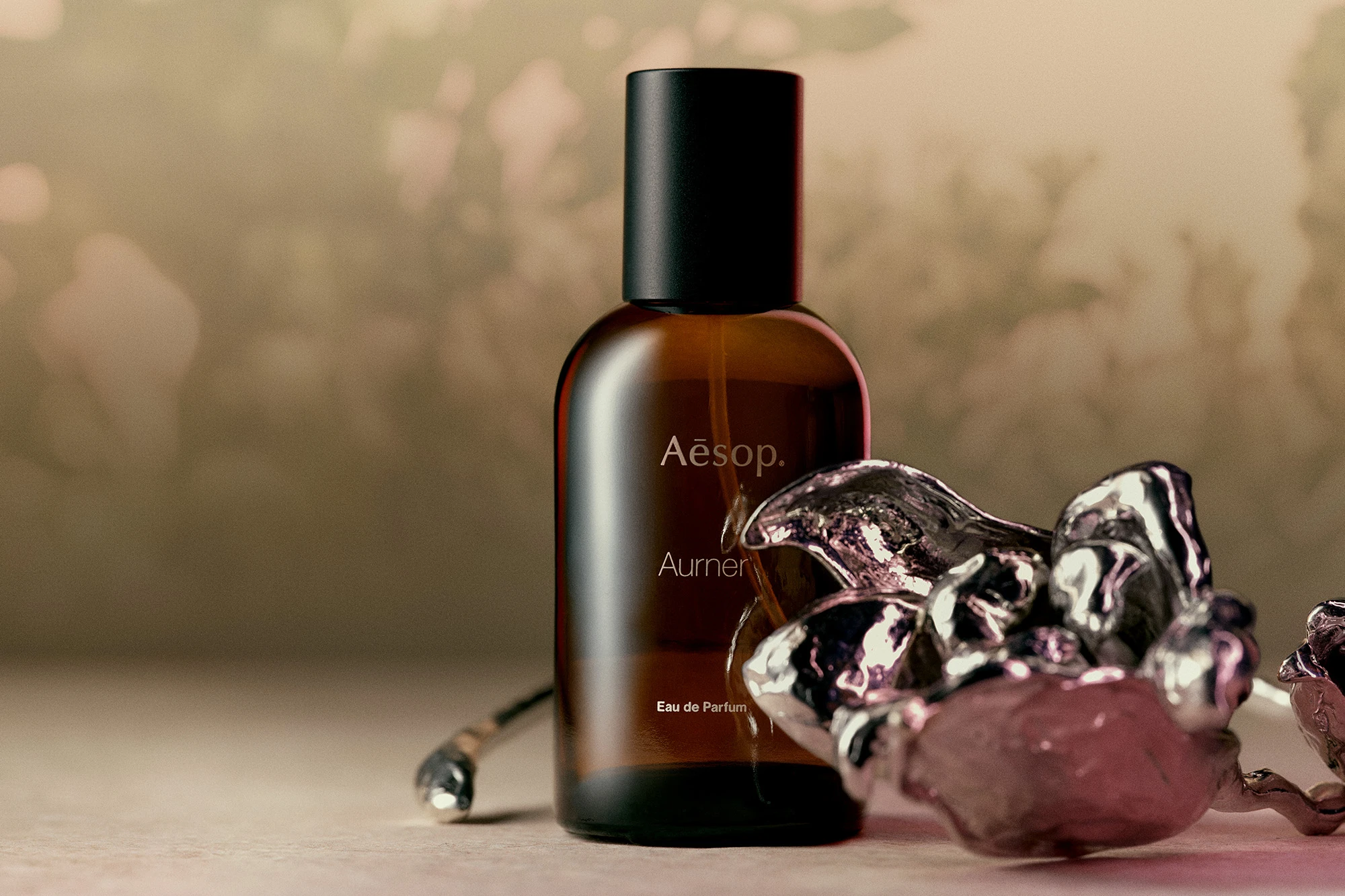
“The tensions are embodied in contrasts such as the fragility of the flowers versus the strength of the woods; transparency of the bloom versus solidity of the woods; fresh versus warm; vegetal versus mineral, almost metallic; feminine versus masculine and being simple yet complex. We began working on different flowers at the beginning but very quickly magnolia seemed to be the right choice, specifically the leaf versus the petal. The magnolia flower has a ripe fruity facet that offers more of a spicy floral whereas the magnolia leaf has a crisp aromatic freshness that is somehow between a crushed leaf and lavender. It’s very complex, bright, clean and bloomy – almost citrusy green so not an obvious floral, which felt true to Aesop’s unorthodox approach.”
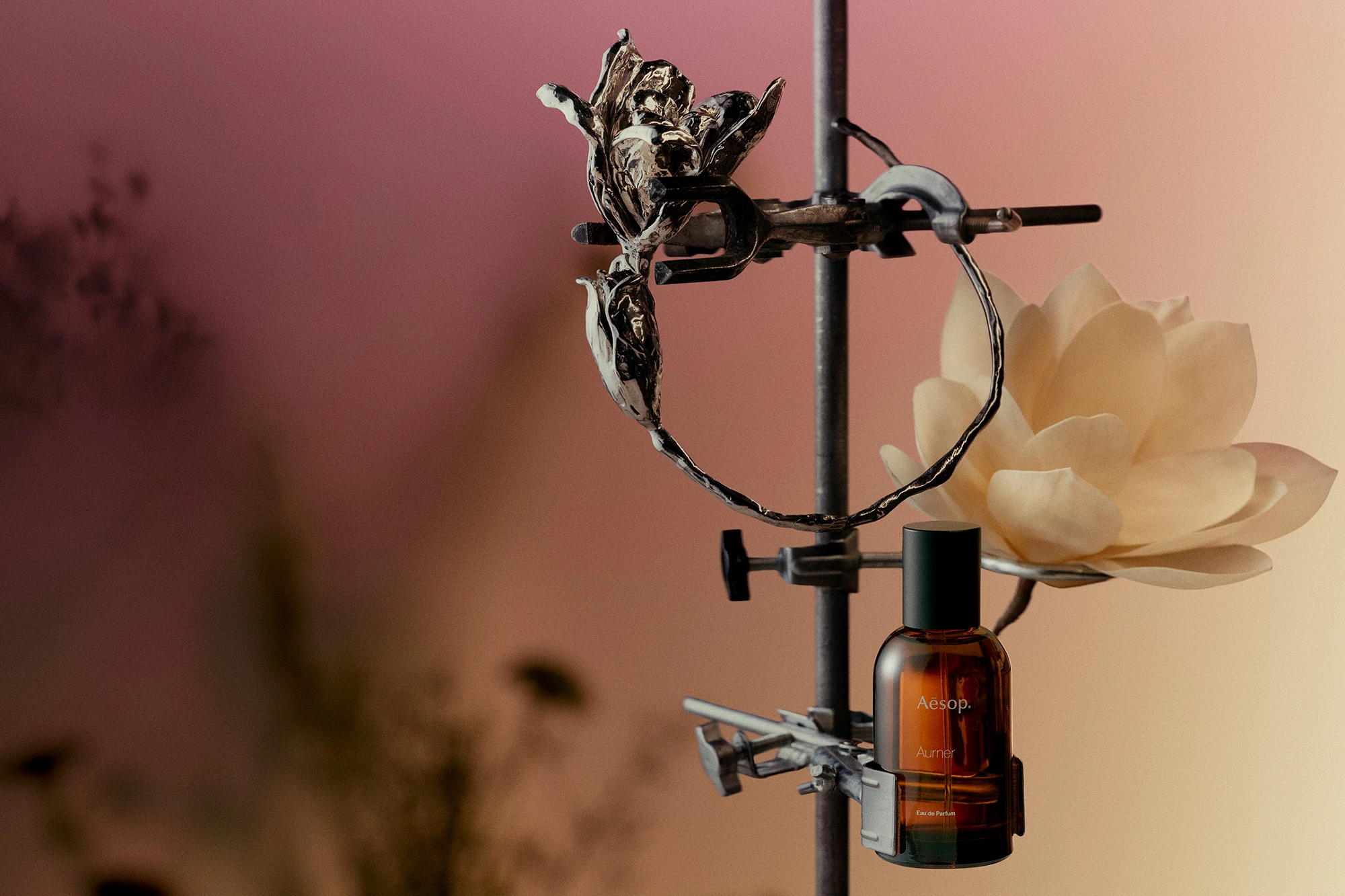
The fragrance also contains cedarwood heart, which is a complex fractional selection and an extraction of the more commonly used cedarwood oil, lending the fragrance a soft, creamy woodiness rather than the more obvious wood scent associated with the oil. But it’s the chamomile that really gives the fragrance its herbaceous and woody yet soft aroma. “Aurner’s hero ingredient is clearly the magnolia leaf, but any fragrance needs to have an edge and a strange factor,” says Barel, who credits a French writer with the idea that strangeness is a necessary ingredient in beauty. She recounts lying
in the bathtub one evening after a day of working on Aurner in
Grasse and bringing a cup of chamomile tea to her lips.
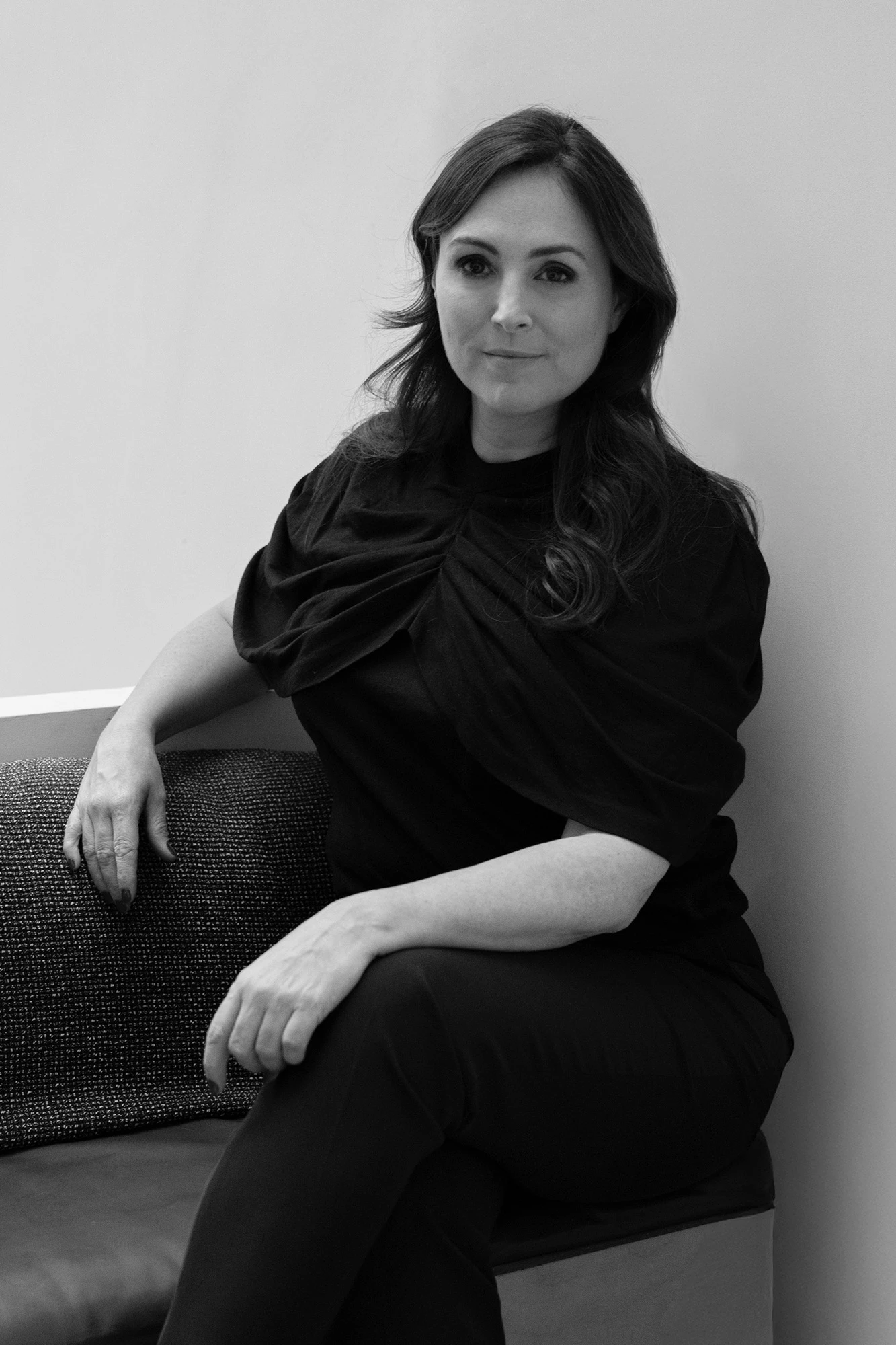
“The Roman chamomile gives more body and volume to the floral. It’s really a key ingredient that bridges a lot of things together. Roman chamomile also has something camphoraceous about it, which echoes the freshness of the cedarwood and of the patchouli, so it helped me to bring the base notes into the foreground, and bring the top notes down, which anchors the fragrance,” Barel explains.
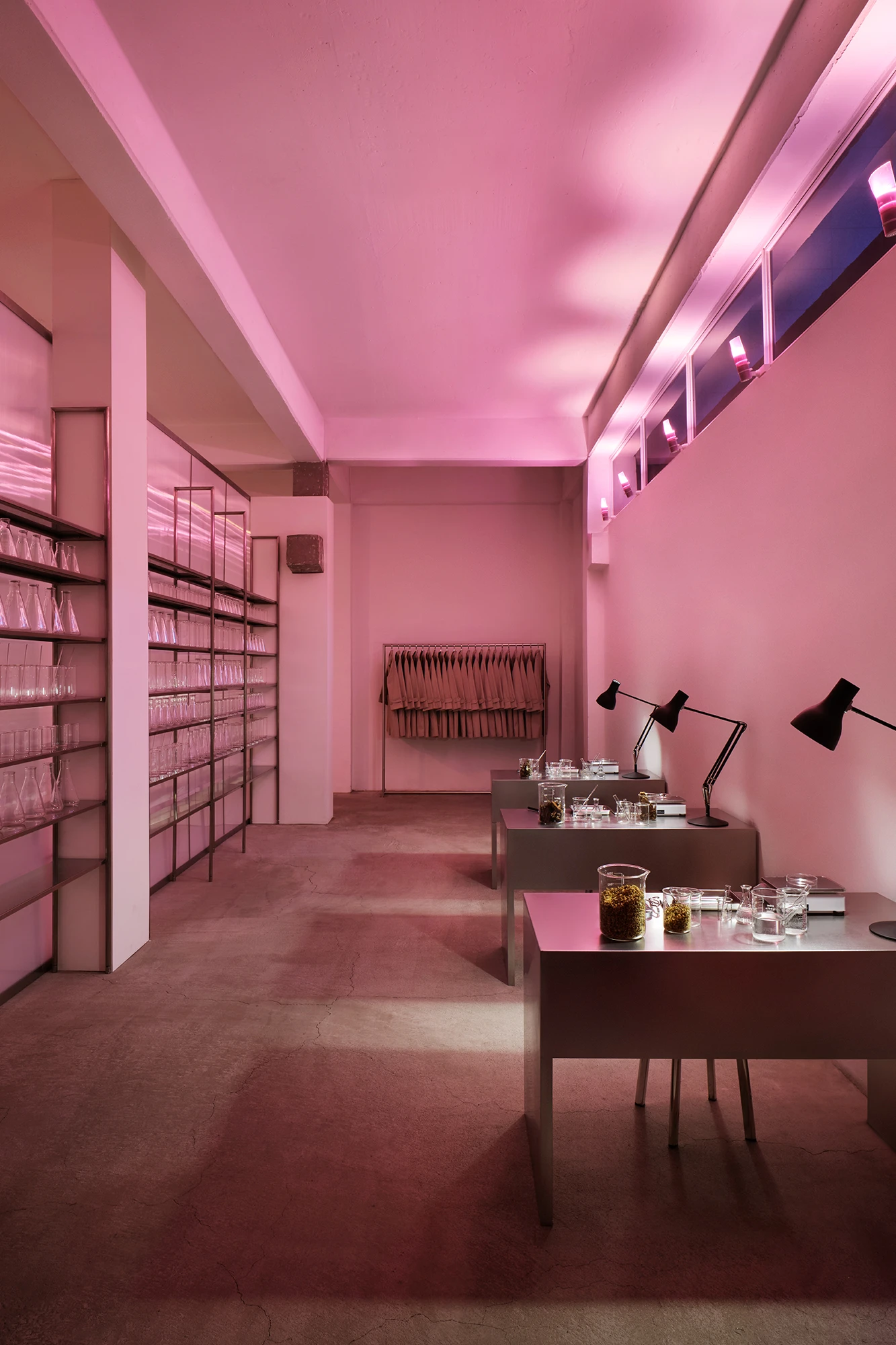
But there is complexity to deciding when a fragrance as abstract as this one is complete. How to encapsulate defiance? How to decide on the potency of defiance? And how to adjust the proportions of bloom and defiance such that the defiant bloom hits just the right notes? To this, Barel says, “People often ask me this question – when do I know the fragrance is finished? Well, I’m much inspired by a very Aesop way of working, which is minimalism and focusing on the essential. I’m also guided by a quote from French writer that says perfection is achieved not when there is nothing
to add but when there is nothing to be removed.”
Also see: Louis Vuitton teams up with Dame Pat McGrath for its debut makeup line





